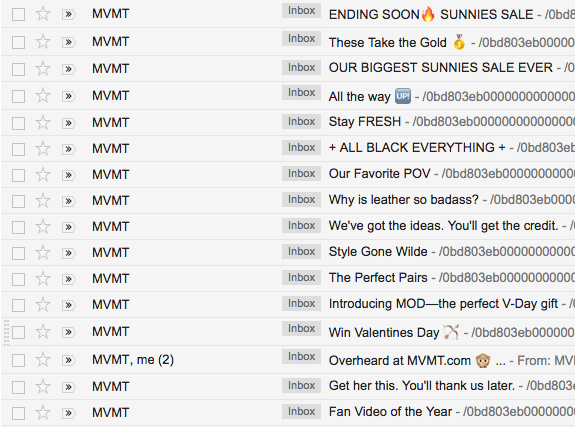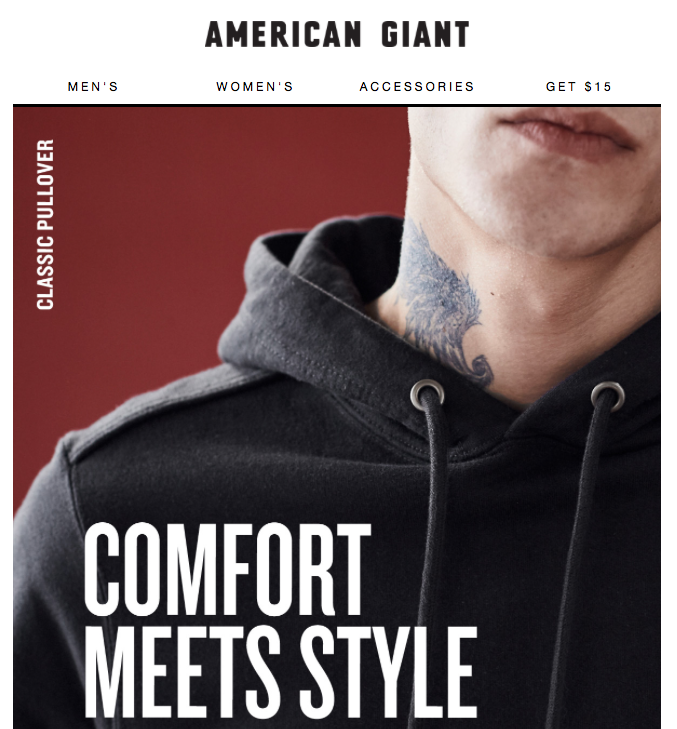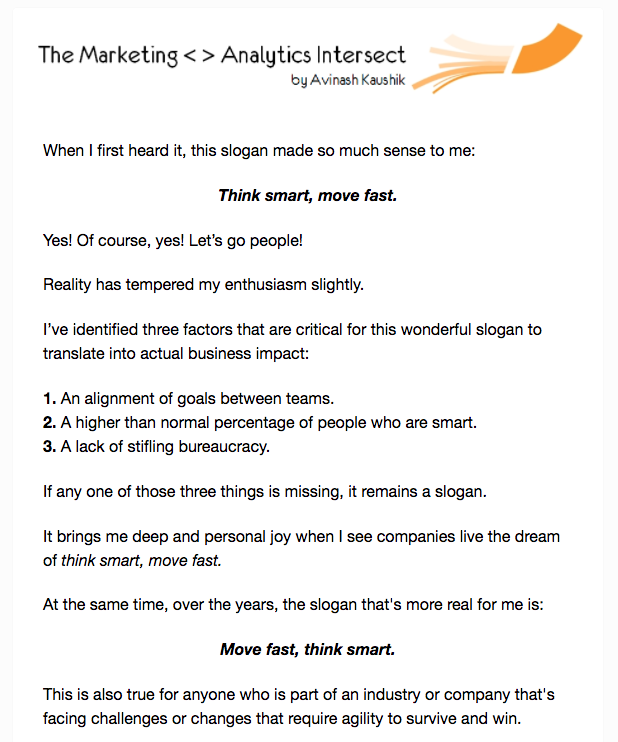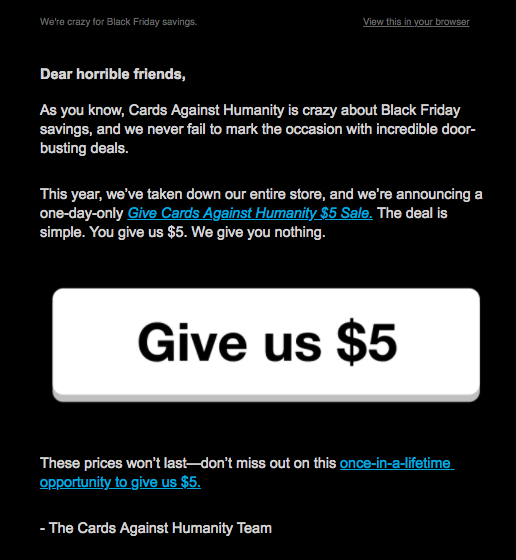Running email campaigns is easy. What isn’t easy, however, is making sure that every new campaign is better than the previous one.
Whether you like it or not, to achieve this you have to get off the beaten path and try something new. Try out a different approach to see how your audience will respond to it. Then, analyze what it tells you about your customers’ behavior and preferences.
What’s most important in email campaign optimization is the first step. So, to help you improve your opens, clicks, and conversions I’ve gathered five ideas that you can quickly test in your future email campaigns.
Whether you’re a novice or an experienced email marketer, I’m sure you’ll learn a lot if you decide to run these experiments.
1. Sending day and time
What’s the best time to send emails? – if you’ve worked in the email marketing field, the chances are that you’ve asked yourself this question before.
So what’s the answer?
According to the latest data from Email Marketing Benchmarks, your best bet is to aim for Tuesdays, 10 to 11 AM and 2 to 4 PM.

Email Marketing Benchmarks – Results by hour of day
But is this really the best time for your audience?
Not necessarily.
What’s more, if everyone else decides to send their emails at the same time, what’s the likelihood that your message will be the one that stands out?
Stop wondering and start testing.
If you haven’t specifically told your audience at what time they should be expecting your campaigns in their inbox, then go ahead – run an A/B test and challenge your current approach.
Word of advice: Be sure to look beyond the email opens and pay attention to conversions, too. The chances are that the time when most sales take place is different from when your open rate is the highest.
This could happen, for example, if your customers typically browse through your emails or site using mobile devices, but to make the final purchase, they prefer to use a desktop computer instead.
2. Length and content of your subject line
How do you go about choosing the subject line for your email campaign?
Most marketers write out a few ideas and then just send whatever feels best.
Even less frequently do they report on the results, trying to figure out what combination of words is going to perform best for them.
But, there are many things to consider when crafting your email subject line.
For example:
- Number of characters
- Use of power words
- Use of personalization
- Use of emojis and other special characters
- Use of numbers
These are all important, especially if your audience is reading emails on their phones. Since mobile devices tend to limit the number of characters displayed to somewhere between 40 and 70, the impact of your message may be affected.
So, what I’m suggesting is that you don’t just run campaigns based on your gut feeling.
Instead, write out several variations for your subject lines (using the elements listed above), run a few tests, and report on your findings.

Examples of creative email subject lines used by MVMT
What you’ll likely find is that certain words perform better than others.
These could be branded keywords, for example, the name of your loyalty program, or phrases written the way your audience would write them.
Or, it could be that a little dose of personalization – like mentioning the products or categories your customers browsed before – is going to have the biggest impact on your open rates.
Word of advice: When running your A/B tests, don’t forget to document what you’re testing and what the outcome was. This way, with every new experiment you’ll learn something new and will know exactly why you’ve decided to go with a given approach.
3. Hero image
Hero image, the very first thing that people see after opening your email. The key to capturing their attention for more than just a couple of seconds.
It has the power to either break or deliver on the promise you’ve made in the subject line. So how do you know if you’ve chosen the best possible option?
In many cases, marketers use whatever image they got from their designer. While the designer may have the perfect knowledge of what looks good and what doesn’t, they rarely have the chance to speak to your customers directly and get to know them.
That is why when running your next email campaign my advice is to challenge your designer and ask them to create a set of two or three images you’d like to test. And once you run the test, share the results with the rest of your team.
When choosing the images, think of all the available options. You could present your product from different angles, show it in use, use a professional photo taken in a studio, or source content submitted to social media by your audience.
Word of advice: When analyzing your test results, take a closer look at how they varied across your customer segments. This can help you with getting to know them better.


American Giant’s interesting hero images that can be used to segment their audience by gender
4. Image-based or text-based
Marketers keep saying that you have to make your communication authentic and personal. Otherwise, people won’t want to engage with it.
This may be true, but what does that mean really?
Do people always buy from people? Or do they go online, check out whatever they’re interested in, read the reviews and case studies, and then decide whether they’ll give it a go? And is this the same for B2B and B2C?
Some best practices don’t always have to be best for your audience. One of such things refers to your newsletter’s design. Do you have to use beautiful images in your email to make them stand out? Or is it better to send a text-based email?
You won’t know until you test it.

A mainly text-based email from The Marketing Analytics Intersect newsletter by Avinash Kaushik
While the data says that image-based emails have better CTRs than text-based emails, I can imagine how the text-based ones would work better for certain customer segments. Especially in a situation where you’re trying to build a relationship and not appear “salesy.”
Look at your current campaigns and think about where you could fill in more text-based emails. Perhaps in your welcome series, post-webinar follow-up, product update, or when asking your customers for feedback?
Word of advice: If you’re unsure about this approach, you can start by reducing the number of images used in your emails. Leave your logo and visible CTA button, but try to avoid anything that’s taking the attention away from your message.
5. Call to action (CTA)
There are many theories about what makes a call to action effective.
It has to be visible and stand out from the rest of your message. It has to be big enough and have additional whitespace surrounding it, so that people will be able to click it with their thumb when reading the email on a mobile device.
There are even more theories when it comes to the copy. Similar to testing subject lines, you might want to use power words and focus on the value your users will get from clicking through to your site. Other times humor might work better, like in the example below, from Cards Against Humanity.

Black Friday savings campaign from Cards Against Humanity
While you can test all of these ideas, I’d recommend that you start by adding some personalization to your buttons.
For example, instead of using a button that says, “See how this works in action,” why not try and check how this would perform – “See how it can work for [your company name].”
To be able to use this approach, you’ll need a bit of data. Either your customers’ name, domain URL, or the company name. Of course, the more data you have in your CRM, the more options you’ll have to personalize your CTA buttons.
This subtle technique can help you improve your click-through rates, without adding much development work on your side.
All you have to do is apply a bit of dynamic-content syntax that’s going to substitute the [your company name] or any other field that you decide to use for the value that you’ve previously assigned to your customer.
It’s that simple.
Don’t just assume, test it
There you have it. Five ideas you can quickly test to learn more about your audience and improve your email campaigns.
My last word of advice is that you should test one thing at a time. And don’t hurry. Run the test for a few weeks (depending on how often you communicate with your audience) and then analyze the data.
Feel free to use both your experience and gut-feeling. But do find the time to back it up with data.
As content marketing manager, Michal Leszczynski is responsible for coordinating content marketing projects in GetResponse. Over the years, he’s planned, delivered, and optimized numerous email marketing campaigns for the brand’s enterprise clients. Currently, Michal’s main mission is to provide valuable and educational content for marketers — those just starting out as well as those already rocking in the online world. Connect with Michal on Twitter, @mrleszczynski.





